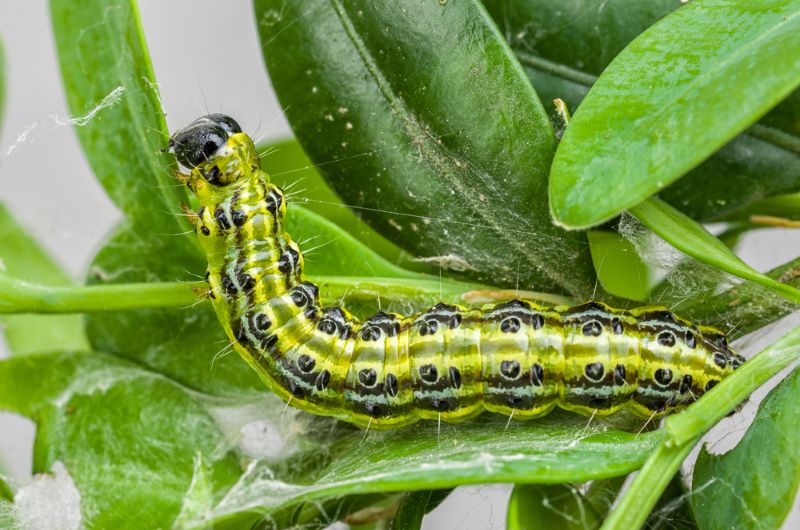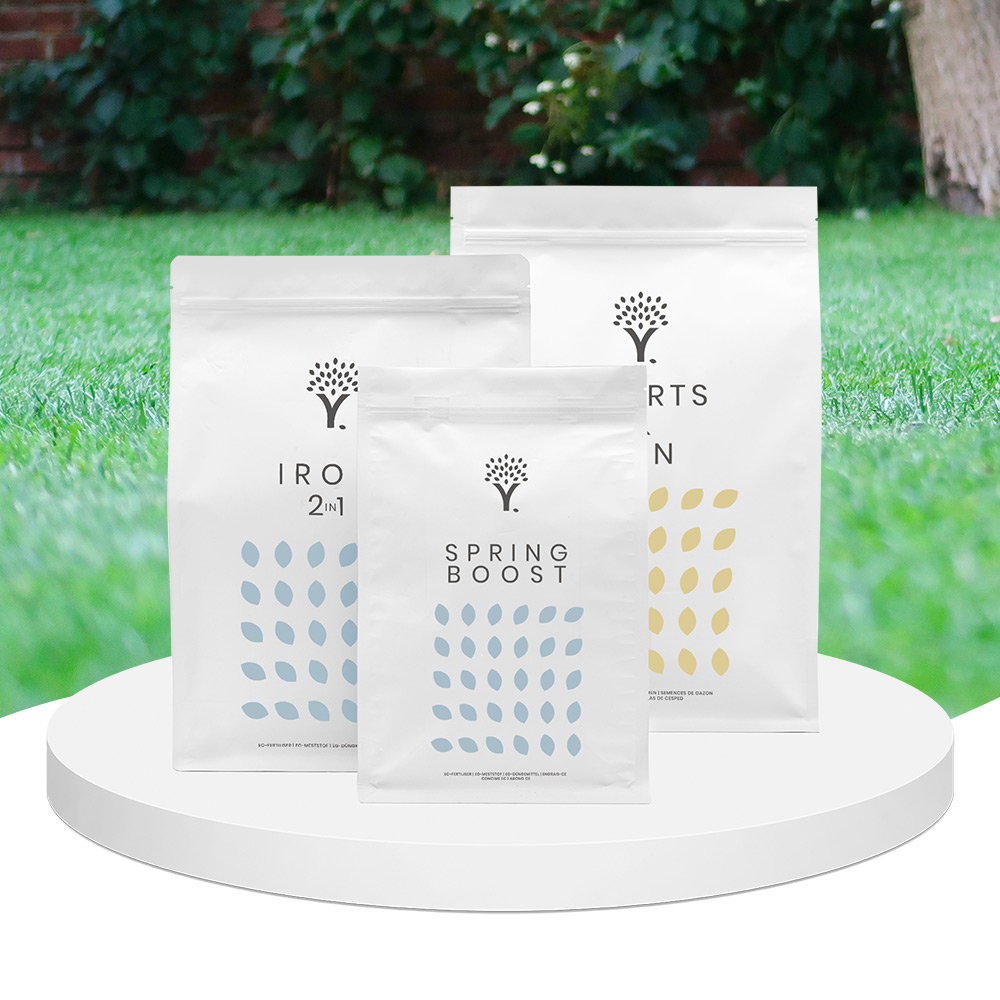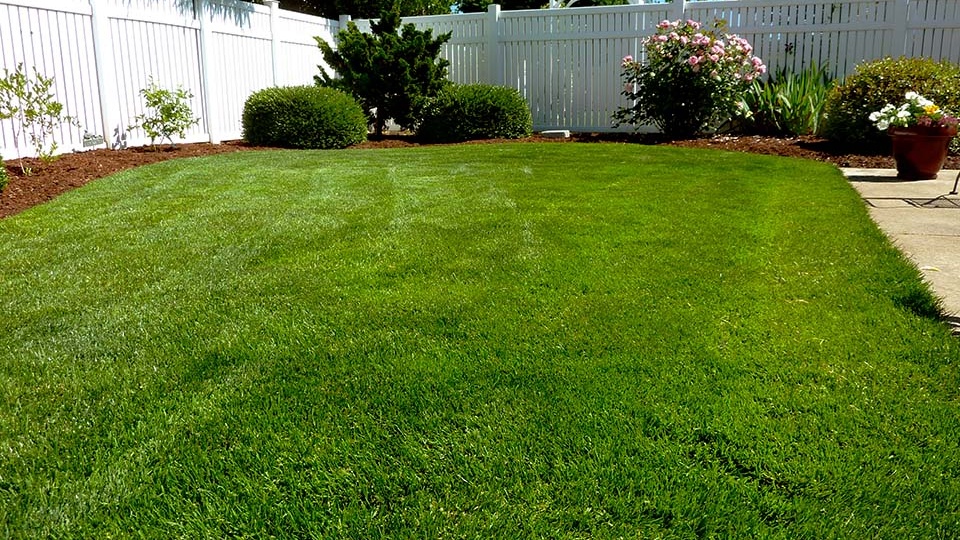Log in or create new account to save this product to your wishlist.
How to identify, fight and prevent the box caterpillar in your garden
The box caterpillar can destroy a healthy buxus plant within a week. Find out how to identify them and stamp this invasive species from your garden.
Latest articles
7 MIN 22 Jul How to keep your lawn in shape this summer 9 MIN 15 Jul Watering Your Garden: 10 Top Tips! 11 MIN 15 Jul Is Your Grass Type Right for your Garden? 11 MIN 10 Sep Create Your Low-Maintenance Garden – Tips and Ideas 11 MIN 08 Sep The Ultimate Guide to Choosing the Perfect Hedges for Your Garden 12 MIN 30 Aug The Top 20 Evergreen Climbers to Transform Your GardenBox caterpillars are a common pest in the UK, and they can cause significant damage to your garden if left unchecked. Thankfully, there are several ways to identify, fight, and prevent box caterpillars from wreaking havoc on your plants.
- What are box caterpillars?
- What does a box caterpillar look like?
- What is the box caterpillar’s life cycle?
- Identifying the signs of box caterpillar infestation
- Why box caterpillars and box moths thrive in the UK
- How to get rid of box caterpillars naturally
- Prevention: how to keep box caterpillars out of your garden
- Chemical treatments for box caterpillars
- How to deal with box blight
- The best plants for deterring box caterpillars
- Conclusion
- Get in touch
- Frequently Asked Questions
In this article, we’ll discuss what box caterpillars are, how to identify and get rid of them, and methods to prevent them from entering your garden in the first place.
What are box caterpillars?

Box caterpillars, also known as box hedge caterpillars and box tree caterpillars, are a type of moth that feeds on the leaves of box trees (buxus) and hedges. They’re native to East Asia but have been spotted in domestic gardens in the UK since 2011 — it’s believed that they arrived on imported Buxus plants.
Box caterpillars can cause severe damage to box hedges and trees by stripping the leaves off in large numbers, leaving a skeletal, dying plant.
Many insects provide a tasty, nutritious snack for the birds. However, box caterpillars are full of foul-tasting toxins from the Buxus plant, so birds tend not to eat them. So, without a natural predator, box caterpillars can be a real problem in a domestic garden.
What does a box caterpillar look like?

Box caterpillars have black heads, green bodies, and distinctive black and yellow stripes. Like most caterpillars, they eventually transform into moths.
Box moths are nocturnal insects with white wings spanning 4cm. Their wings are edged with a dark brown trim and a little white “horn” halfway across the outside of the wingspan.
What is the box caterpillar’s life cycle?
The box caterpillar has a fascinating life cycle, beginning at the egg stage. Female box moths lay hundreds of small, round, yellowish eggs on the underside of leaves, which hatch in just a few days.
After hatching, the box caterpillar larvae feed on the leaves of their host trees for several weeks, growing larger
until they’re ready to transition to the pupal stage. At this stage, they attach to a stem and spin a silken cocoon, remaining wrapped in silk for up to three weeks.
During this period, the caterpillar undergoes a complete metamorphosis, emerging as an adult moth. The box caterpillar moth is active at night.
The box caterpillar moth is a pollinator and is most active during the summer months. During this time, female moths lay eggs on their host trees, starting the cycle anew.
Identifying the signs of box caterpillar infestation

The first sign of a box caterpillar infestation is usually the presence of small, oval-shaped holes in the leaves of your box tree or hedge. These are caused by the caterpillars feeding on the leaves.
This very hungry caterpillar eats the plant’s leaves, leaving faded or brown patches across the bush. However, the worst damage tends to start around the base of the bush, expanding upwards.
Box caterpillars are most active between March and October, during which time they can destroy a box plant within a week.
Other signs of infestation include:
- the presence of caterpillar droppings on the ground beneath the tree or hedge and
- white webbing on the leaves or branches as the caterpillar enters its pupae form before transitioning into moths.
Why box caterpillars and box moths thrive in the UK
The main problem with box caterpillars in the UK is that they have no natural predators here. So, the only option is to use biological or chemical solutions to control and eradicate a population invading your garden.
How to get rid of box caterpillars naturally
Once you’ve identified a box caterpillar infestation, there are several methods to get rid of the pests.
Pick box caterpillars off the plant
The first way to naturally remove box caterpillars is by manually removing them from the plant. You can do it by hand or by using a vacuum cleaner to suck the caterpillars off the plant.
Make sure you wear gloves and wash your hands thoroughly after touching them — they may release poisonous chemicals onto your hands.
Use a pheromone trap
Pheromone traps contain a synthetic box moth pheromone that attracts male moths, catching them to disrupt the breeding cycle.
While these traps can be effective, you need to replace them regularly, and they won’t catch every single male. So, while they will interrupt breeding, these traps aren’t guaranteed to eradicate the problem completely.
Microbial insecticides
You’ll need a professional to administer the Bacillus thuringiensis bacteria that will stop your box caterpillar infestation dead. And while it’s an effective biological approach, it can be costly.
Natural pesticides
Some natural pesticides are available that use essential oils repellent to the box caterpillar population.
For example, the Box Plant Health “Cleanse & Shine” treatment deters caterpillars from eating the leaves of plants sprayed with the oil mix.
And win-win: this particular treatment makes your box plants’ leaves shine for a healthy-looking box plant.
Prevention: how to keep box caterpillars out of your garden

The best way to prevent box caterpillars from entering your garden is to ensure that the area around your plants is kept clean and tidy. This means removing dead leaves, twigs, and grass clippings from the site and keeping the garden free of weeds.
Additionally, it is essential to regularly inspect your plants for signs of caterpillar infestation – as early detection can help to prevent a full-scale infestation.
Additionally, you can use natural repellents, such as garlic and chilli powder, sprinkled around the base of your box plants to deter these little critters.
Chemical treatments for box caterpillars
If natural treatments are not enough to eliminate box caterpillars, you’ll have to rely on harsher chemical treatments.
However, it’s essential to be aware that chemical treatments can affect other beneficial species, such as bees — so, use these as a last resort.
Box caterpillar insecticides are available online but follow the instructions closely to avoid damaging neighbour plants and wildlife.
How to deal with box blight
Box blight is a fungal disease that affects box trees and hedges and cause severe plant damage if left unchecked.
If your buxus is affected by blight, you’ll notice the following symptoms:
- Brown leaves that drop off the branches
- Black streaks on young stems, possibly dying back
- White spore masses underneath infected leaves
The best way to deal with box blight is to:
- Prune the affected branches, cutting off slightly more than you consider necessary
- Apply a fungicide to the affected areas
- Avoid touching healthy box plants until you’ve thoroughly washed your hands
If the problem persists, remove the affected plants and replace them with new ones.
The best plants for deterring box caterpillars
Box caterpillars and moths don’t like lavender, garlic, rosemary, and chrysanthemums.
These plants have strong smells that can help repel the caterpillars and provide an attractive addition to your garden. So, consider planting them around your box plants to help deter box caterpillars and moths.
Conclusion
Box caterpillars can cause significant damage to your garden if left unchecked, but thankfully there are several ways to identify, fight, and prevent them from wreaking havoc on your plants. Following the steps outlined in this article can help keep your garden free from box caterpillars.
Get in touch
Hopefully, you feel better informed about your grass type, but if you have more questions, we’d be very happy to help.
If you have any questions, email us at hello@moowy.shop. We’re looking forward to hearing from you.
Thanks for reading.
Frequently Asked Questions
Aim to treat box caterpillar infestations immediately; otherwise, they’ll destroy your box plants. Once you’ve removed the caterpillars, your box plant should recover fully.
Box caterpillars devour box plants very rapidly, imbibing the poisons from the plant as they go. This makes the caterpillar poisonous to other wildlife, including birds, which is why these bugs have no natural predators in the UK. So, don’t eat box caterpillars or moths!
You can pick box caterpillars off your box plants by hand or use a vacuum cleaner to suck them off the plant’s leaves. Alternatively, use pheromone traps, which capture the male moths, disrupting the breeding cycle.
Leave a comment
Your answer will be displayed on the site and the interested party will be notified by email.
Leave a comment
Have a question or want to share your experience? Leave us a comment.
Read more
The best tips and tricks for a lush green lawn
 7 MIN
13 Sep
Lavender Cuttings: a step-by-step guide
7 MIN
13 Sep
Lavender Cuttings: a step-by-step guide
 11 MIN
10 Sep
Create Your Low-Maintenance Garden – Tips and Ideas
11 MIN
10 Sep
Create Your Low-Maintenance Garden – Tips and Ideas
 Scarifying Kit
All products after scarifying | Quickly restores the lawn after scarifying | Outsmart weeds quickly with the use of this kit
From: € 39.99
Scarifying Kit
All products after scarifying | Quickly restores the lawn after scarifying | Outsmart weeds quickly with the use of this kit
From: € 39.99
 Spring Lawn Care Kit
MOOWY’s choice for the spring | Quick recovery of your lawn after winter | A strong lawn prevents weeds
From: € 25.99
Spring Lawn Care Kit
MOOWY’s choice for the spring | Quick recovery of your lawn after winter | A strong lawn prevents weeds
From: € 25.99
 Long Lasting Lawn Fertiliser
Effective for 90 days | See results in 14 days! | Suitable for all types of grass and soil
From: € 13.99
Long Lasting Lawn Fertiliser
Effective for 90 days | See results in 14 days! | Suitable for all types of grass and soil
From: € 13.99
Do you want a lawn calendar?
🌱 All important maintenance moments for your lawn during the year. Leave your email and we will send you the lawn calendar for free.
Enter your email
Receive the lawn calendar in the mail
Enjoy a green lawn all year round!










Comments (0)
There are no comments yet. Well then, what are you waiting for to
Be the first to write your comment!inaugurate this pretty page?
Do you have some comments?